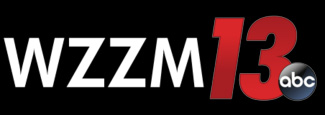Community
Caution, Supervision, Keys to Fireworks Safety
The Fourth of July weekend begins tomorrow and medical staff at the Spectrum Health Regional Burn Center caution people to be safe with holiday fireworks.
Consumer-grade fireworks that fly and explode have been legal in Michigan since January, 2012. A report from the Consumer Safety Products Commission (CSPC) states that fireworks were involved in an estimated 8,700 injuries treated in U.S. hospital emergency departments during calendar year 2012. That includes six deaths.
Other findings of the CSPC study included:
- Of the fireworks-related injuries sustained, 74 percent were to males, and 26 percent were to females.
- Children younger than 15 years of age accounted for approximately 30 percent of the estimated 2012 injuries.
- Thirty-six percent of the estimated emergency department-treated, fireworks-related injuries were individuals younger than 20 years of age.
- There were an estimated 1200 emergency department-treated injuries associated with firecrackers.
- There were an estimated 600 emergency department-treated injuries associated with sparklers and 400 with bottle rockets.
- The parts of the body most often injured were hands and fingers (an estimated 41 percent); eyes (an estimated 19 percent); head, face, and ears (an estimated 12 percent); and legs (an estimated 13 percent). More than half of the emergency department-treated injuries were burns. Burns were the most common injury to all parts of the body, except the eyes, where contusions, lacerations, and foreign bodies in the eyes occurred more frequently.
“This data proves that there is no such thing as safe fireworks,” said Richard Wilcox, MD, medical director of the Spectrum Health Regional Burn Center. “Even long-time favorites such as sparklers are dangerous. Parents need to use extreme caution and not let children play with fireworks.”
Wilcox urges people to follow these safety tips from the CSPC:
- Never allow young children to play with or ignite fireworks.
- Avoid buying fireworks that are packaged in brown paper because this is often a sign that the fireworks were made for professional displays and that they could pose a danger to consumers.
- Always have an adult supervise fireworks activities. Parents don’t realize that young children suffer injuries from sparklers. Sparklers burn at temperatures of about 2,000 degrees – hot enough to melt some metals.
- Never place any part of your body directly over a fireworks device when lighting the fuse. Back up to a safe distance immediately after lighting fireworks.
- Never try to re-light or pick up fireworks that have not ignited fully.
- Never point or throw fireworks at another person.
- Keep a bucket of water or a garden hose handy in case of fire or other mishap.
- Light fireworks one at a time, then move back quickly.
- Never carry fireworks in a pocket or shoot them off in metal or glass containers.
- After fireworks complete their burning, douse the spent device with plenty of water from a bucket or hose before discarding it to prevent a trash fire.
Wilcox said that people should consider safe alternatives for celebration. Michigan offers many fine community fireworks displays.
Spectrum Health is a not-for-profit health system, based in West Michigan, offering a full continuum of care through the Spectrum Health Hospital Group, which is comprised of 10 hospitals including Helen DeVos Children’s Hospital; 130 ambulatory and service sites; 975 advanced practice providers and employed physicians including members of the Spectrum Health Medical Group and West Michigan Heart physician groups; and Priority Health, a health plan. Spectrum Health is West Michigan’s largest employer with 20,000 employees. The organization provided $204 million in community benefit during its 2012 fiscal year.




